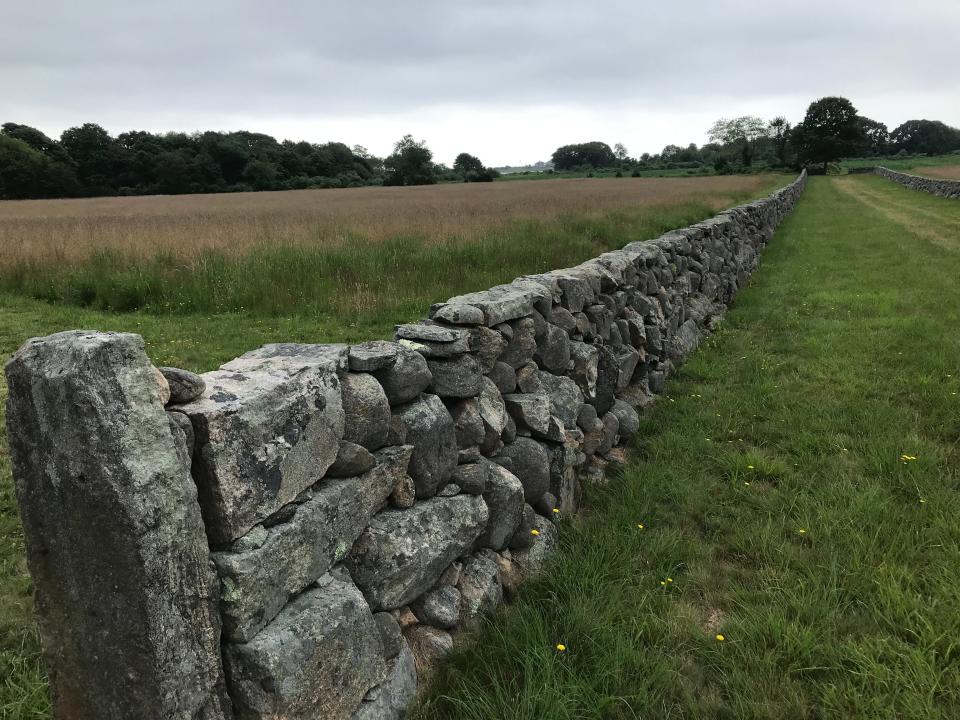Wondering about who built those New England stone walls | Opinion
Richard Lawrence teaches English at Mount Saint Charles Academy.
“Something there is that doesn’t love a wall."
— from "Mending Wall" by Robert Frost
Recently the topic of historic stone walls has been a topic of discussion in at least one suburban town in Rhode Island. It seems that some land developers have been “scooping” the boulders that make up these walls to make way for new construction.
And in doing so, they have been removing and destroying an important part of New England history. And so there is a move — at least in one locality — to make it more difficult for individuals to do this.
Reading these news stories has given me pause.
More: How did old-time farmers get water to flow uphill? Hunting for clues on Coney Brook Trail.
I have always been interested in the stone walls built by early American farmers. I find them beautiful ... and also quite fascinating, a testimony to the fortitude, craftsmanship and perseverance of those who tilled the fields two centuries ago. I often wonder about the toil that went into their construction, trying to figure out just how those farmers were able to build the walls.
I learned recently, from my youngest who took an elective course as an undergraduate on the New England landscape, that walls made up of very large stones probably indicated that the area they surrounded was designated for farming. Every hindrance had to be removed before planting could begin and that included moving even the largest of the stones.

Walls made up of smaller stones typically indicated that those areas were used for pasture, because the larger rocks could be left in the fields. The grazing livestock just moved around the stones that were left behind. And the walls kept growing higher and longer because each year the earth would push additional stones to the surface that had to be removed.
I have walls on my property. I would guess that they might date back some 200 years. I often marvel at their beauty and importance. They provide a legacy for those individuals who worked the land when this country was in its infancy.
More: Happy trails: Walking RI's most-read hiking columns of 2023
The rocks that make up the walls that are sprinkled throughout my property are fairly large, probably suggesting that this was a place where farming took place. The longest line of stone wall snakes its way through a hollow. The observant eye might notice that there is something a little bit out of the ordinary with one section of rocks. It seems that at one point the wall maker left one large pointed rock out of the wall. It stands isolated looking like a giant arrow head, buried in the soil about one foot away from the line of rocks. One might only conjecture why this might have occurred, concluding that it would only be logical to leave this stone where it was because it was too large to move into the wall. So it was just left there waiting …
Waiting for me.
Waiting for me to fall off a ladder some two centuries later (more than 10 years ago) and right into the sharpness of that stone.
Four broken ribs.
A lot of trouble trying to breathe.
A ride to the hospital in an ambulance.
Several weeks of little or no mobility.
Even more time out of work.
And a good deal of discomfort.
I wonder if the farmer and his oxen could have ever imagined such a thing ...
All of this brings me to the wisdom of my late father and one of his truisms: “In life, beauty is all around us. We just have to stop our busy lives and actually notice it.”
Even when it comes to a stone wall that was constructed 200 years ago.
This article originally appeared on The Providence Journal: They are a testimony to the fortitude, craftsmanship and perseverance of those who tilled the fields two centuries ago.

